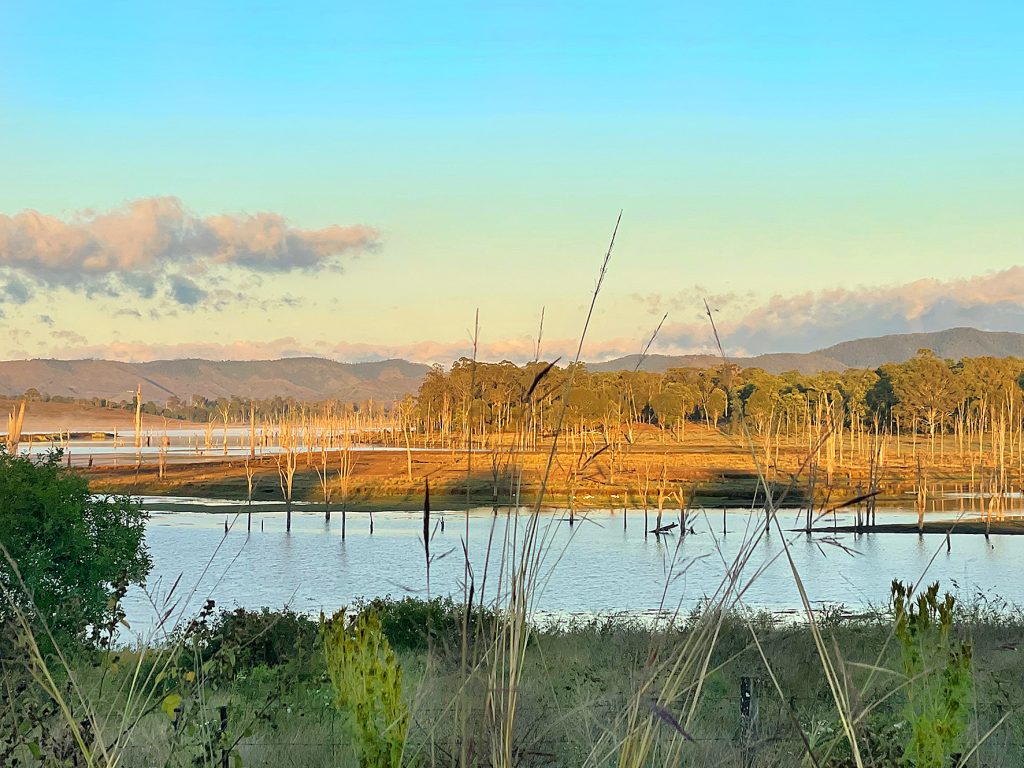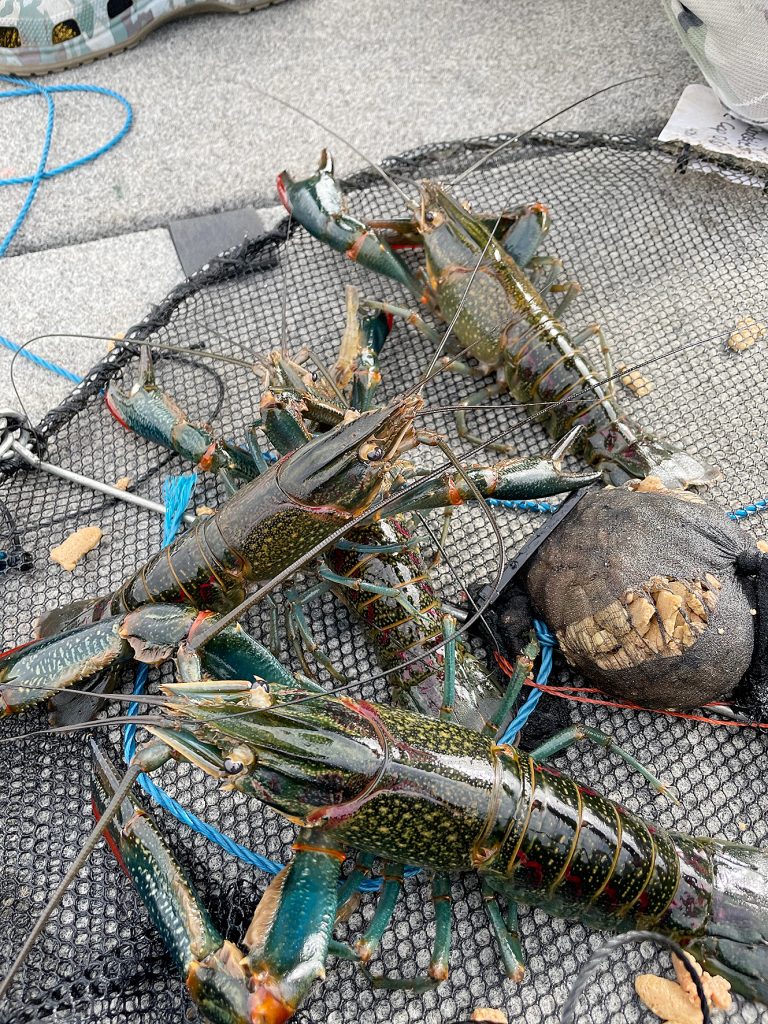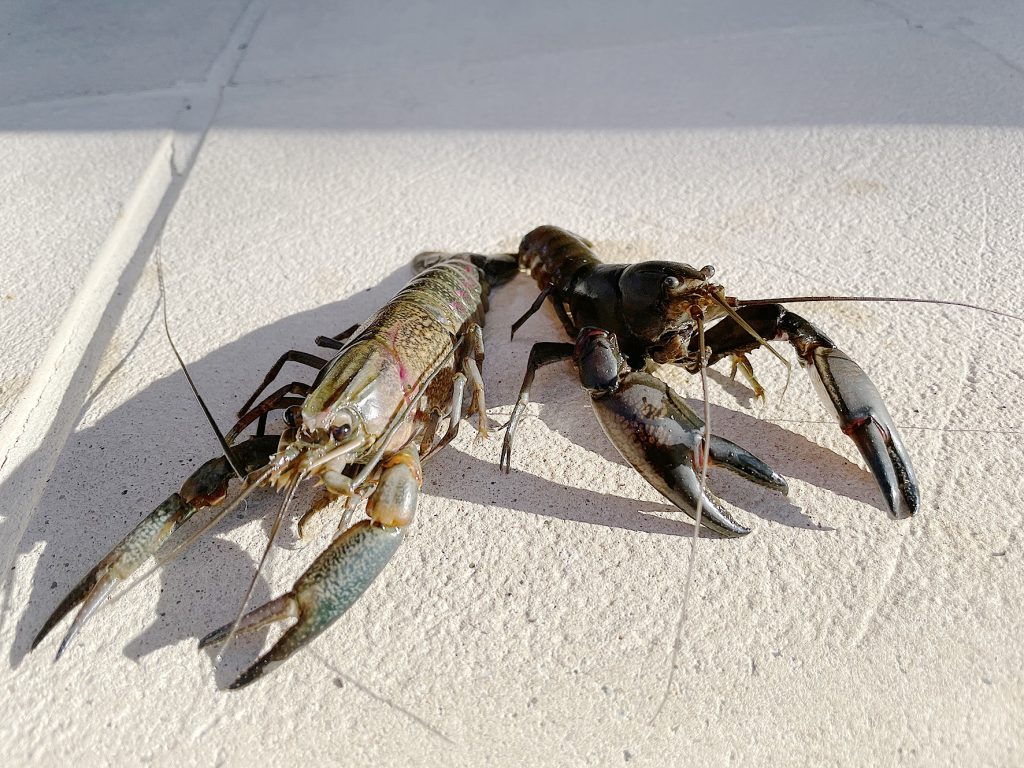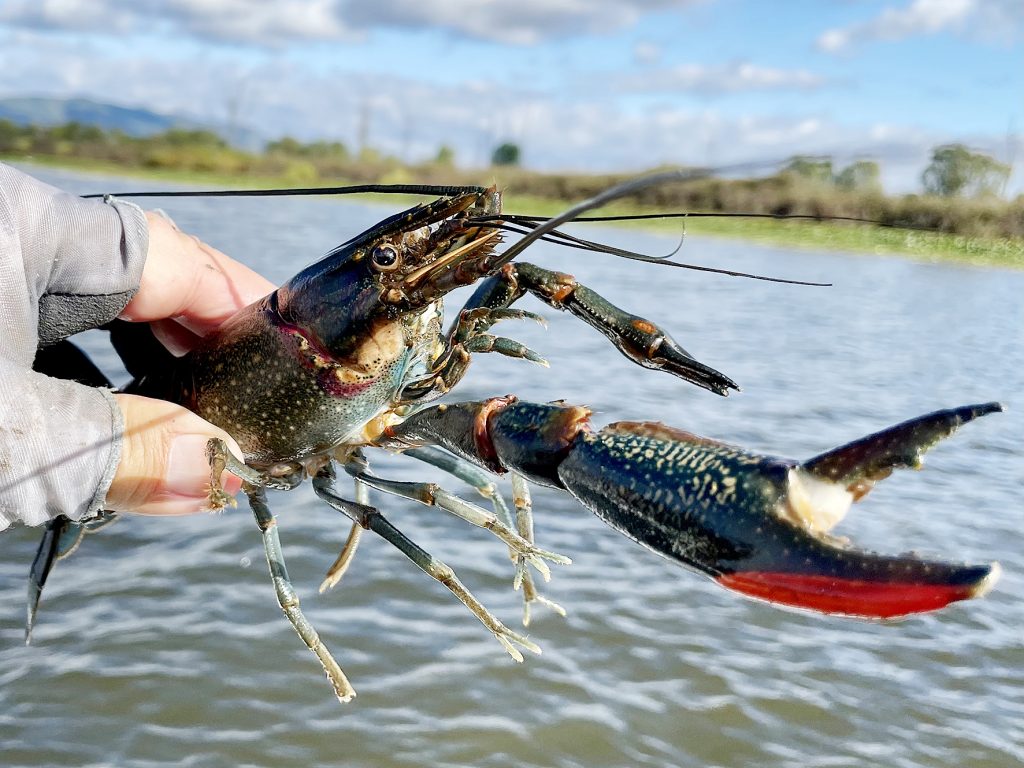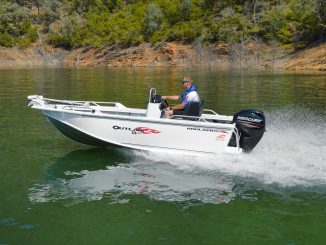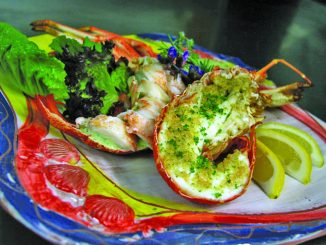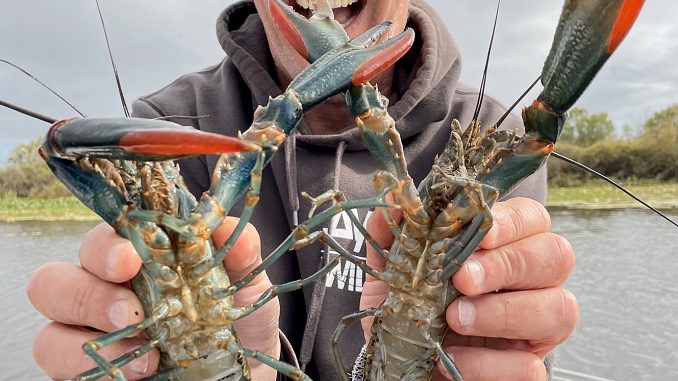
• by Peter Jung (first published October 2021)
As someone who enjoyed fishing for blueclaw crayfish or yabbies for the first 25 years of my life (generally with a piece of meat on a string and a butterfly net) I have been fascinated by the northern version, the redclaw, since moving to South East Queensland.
This fascination has been tempered though, as finding out information about how to catch them (meat and string will not work), is generally vague and a little confusing. I will say here and now that this article will not provide all the answers, but it will give you an insight into what has led to me catching more of these tasty crustaceans.
Rules and regulations
In Queensland there are strict rules regarding catching redclaw crayfish in their natural range, which is far North Queensland. However, outside of this natural range, possession limits etc are removed – in fact, you legally cannot return a redclaw to the water outside of its natural range – and only rules based around the equipment used are in place. Check the rules at www.daf.qld.gov.au or get your hands on a current Queensland Recreational Boating & Fishing Guide.
The basics are: four pots per person, pots must be labelled with your name and address, the float attached to your rope must be solid, at least 15cm in diameter, it must be round and light in colour. This float must also have your name on it. If fishing from the shore your rope must be tied to a solid object.
Where you will find them?
Most of the impoundments and some waterways from the Queensland border up to the northern extremes hold redclaw crayfish. Outside of the northern natural range, they have been translocated by humans and are considered an invasive species. This explains the ‘no return to the water’ rules in place below the Normandy River basin in the north of the state.
Time to catch a few
Unlike the yabbies I was used to catching in our local dams down south, redclaw do not seem to be very active during the day, and therefore a piece of meat on a string is very unlikely to work. A bait trap or opera house pot is the preferred method, with an overnight soak your best option for success.
Baits
What I have found most interesting when trying to find out about redclaw is what baits to use in your pots. I have been told everything from soap, various fruits (rockmelon was the most popular) and vegetables to kangaroo tails and chicken necks. All of these have worked, plus fish frames and canned tuna or salmon, but my greatest success has come using dried dog or cat food in a fish-based flavour. Tied to the centre of the trap in a stocking or a container with holes, it has been by far the best bait I have used.
Best locations for your pots
Weed and structure seem to be the two constants when I have had the most success chasing redclaw. An established weed bed in deeper water (10-20ft) is ideal, while having timber or rock nearby can further improve your chances. Edge-based weed with deep water not too far away is another great option. Placing your pots near the edges of the weed, near structure or on a drop-off in the above depth range has proven to be the most productive.
What has surprised me is that large areas with established weed but with a consistent depth can be very hit or miss (more miss that anything). A depth change nearby in my opinion is very important.
Pot security
It is important that you have ropes long enough so that your pot can settle on the bottom flat, and so that most importantly you don’t lose your pot.
I wish I didn’t have to write this, however there seem to be people out there that like to check not only their pots but yours as well. I add some well-placed zippy ties to my pot closures to ensure I enjoy the fruits of my labour.
Looking after your catch
One of the reasons redclaw crayfish are a popular target in our freshwater is that they do grow quite large compared to their southern cousins, and the return (flesh-wise) is quite large. Even the smaller crayfish have plenty of flesh in the tail section. It pays therefore to look after your catch.
Any esky with ice or iced water to put them in for transport is ideal. The cooler temperature slows them down and stops them fighting with each other, while also allowing you to get them home alive. Once at home I like to put them in a tub of fresh water. Once in this fresh water they tend to purge or clean themselves, making the final cooked product even nicer to eat.
Cooking
Like all crustaceans, redclaw can be cooked many ways. My favourite is pretty simple. Boil them in heavily salted water, peel and put the meat on some toast with some mayonnaise (maybe a little lemon juice). Heaven!
Give it a try
The warmer months seem to be the preferred time of the year to give redclawing a go, however they are an all year round option. What I have discovered recently is that they really move about when the impoundment has had inflows, no matter what time of year it is.
Hopefully this has provided a few hints for you to go out and give redclawing a try. Remember to follow the regulations, get the kids involved – that’s kids of all ages – and don’t forget to enjoy where you are and what you’re doing.

